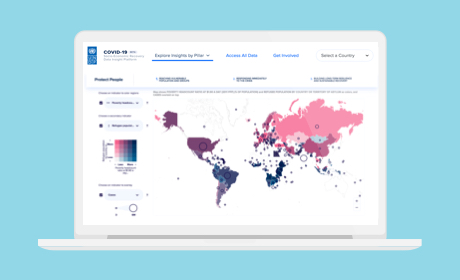School Planning Assistance Tool
THE CHALLENGE
As the population continues to grow over the next fifteen years, New South Wales is likely to need more schools—and more infrastructure to accompany them. It is predicted that, in many suburbs in the Sydney metropolitan area, there will be more students than there are schools to support them.
Consequently, the NSW Department of Education has pledged $7 billion over the next four years, which will go towards capital work in 200 schools across the state, including construction, upgrading and maintenance.
However, determining how to optimise this investment, including when and where to expand current schools, as well as build new ones, is complex. Capital planning for schools for the next decade and a half necessitates the consideration of a multiplicity of factors—from the capacity of existing schools and the projected longevity of their infrastructure, to where population growth will occur and how students’ travel patterns will (and won’t) challenge.
THE SOLUTION
In order to meet this challenge, the NSW Department of Education enlisted us to build the School Planning Assistance Tool, which we created in collaboration with SGS Economics and Planning.
This powerful, industry-leading tool enables planners to run and test an unlimited number of simulations of the future. Every simulation is a unique scenario, displaying the consequences of various approaches to capital planning—from expanding current schools to building new ones.
For every simulation, the planner can evaluate capital delivery, including how well the simulation would meet future demands from a range of perspectives, such as educational outcomes and cost effectiveness.
In the process, the planner can:
- Generate and select a shortlist of asset solutions;
- Assess the risks associated with each scenario; and
- Identify the best response to optimise capital delivery.
“This powerful tool transforms an originally long and complex manual process into a fast and unbiased approach that handles many complex calculations, with no limit to the number of scenarios planners can create. The technology allows the user to plan more effectively by establishing a streamlined workflow to analyse multiple data sets, which are constantly changing. This allows for more informed decisions about how to plan the future of school infrastructure, taking a holistic view of an entire area or state” – Small Multiples Director and Co-founder, Jack Zhao.
ACCURATE, INSIGHTFUL CLUSTER PLANNING
At the heart of the School Planning Assistance Tool is the need for accurate, insightful cluster planning. Cluster planning is an approach to capital planning recently adopted by the NSW Department of Education, which uses place-based principles as a springboard for school planning.
In other words, by focusing on where people live now, planners develop projections with regard to where demand for schooling is likely to occur, what level of capacity will be needed and what kinds of facilities will best meet students’ needs.
A TREASURE TROVE OF DATA, A MYRIAD OF TOOLS
One of the reasons that the School Assistance Planning Tool is so powerful is that it brings together an enormous amount of data from numerous sources. We drew on statistics provided by the NSW Department of Education, as well as information from numerous government agencies and population projection analyses.
This data covers an extensive range of matters relevant to capital planning for schools, such as the capacity of existing schools, the quality of school infrastructure, school capital, maintenance costs, school site standards and the distance students travel to and from schools.
Using machine learning and visual analytic techniques, we transformed the data into a variety of tools—all housed on an easy-to-navigate, integrated dashboard. From this central location, planners can approach the data in a number of ways, in order to reveal the insights they require.
SIMILAR PROJECTS WE’VE WORKED ON
We have created data visualisations for numerous government agencies, government departments, educational institutions and research organisations.
We designed and built an interactive tool for the Queensland Audit office, which enables the user to explore a wealth of financial data about Queensland’s local councils—including revenue, expenses, operating costs, assets, liabilities and sustainability indicators.
The Department of Premier and Cabinet tasked us with creating an interactive touchscreen, which showcases new infrastructure, businesses, jobs and educational opportunities in the area surrounding the Western Sydney Airport, due to open in 2026. Transport for Victoria commissioned us to visualise nine million possible trips by public transport across the state—both now and into the future.
Earlier this year, we collaborated with a non-government school to develop a school portal that would become a “gateway to everything” for teachers, parents/guardians and students.
EDUCATION INFRASTRUCTURE IN OTHER STATES
NSW is not the only state that is aware of the importance of capital planning to safeguard the future of education.
Over the past two years, the Queensland government has promised to invest $1.464 billion in the Queensland infrastructure plan for schools, with money going towards capital work throughout the state, including construction, maintenance and upgrading of educational facilities.
In 2016, the Department of Education and Training, Victoria, established the Victorian School Building Authority, whose mission is to ensure that capital delivery is optimised, so that every child has access to quality education. The Authority oversees developments in school infrastructure across the state, including the design and building of new schools, as well as the renewal of existing ones, made possible by $7.2 billion pledged by the Victorian Government.
 View All
View All





